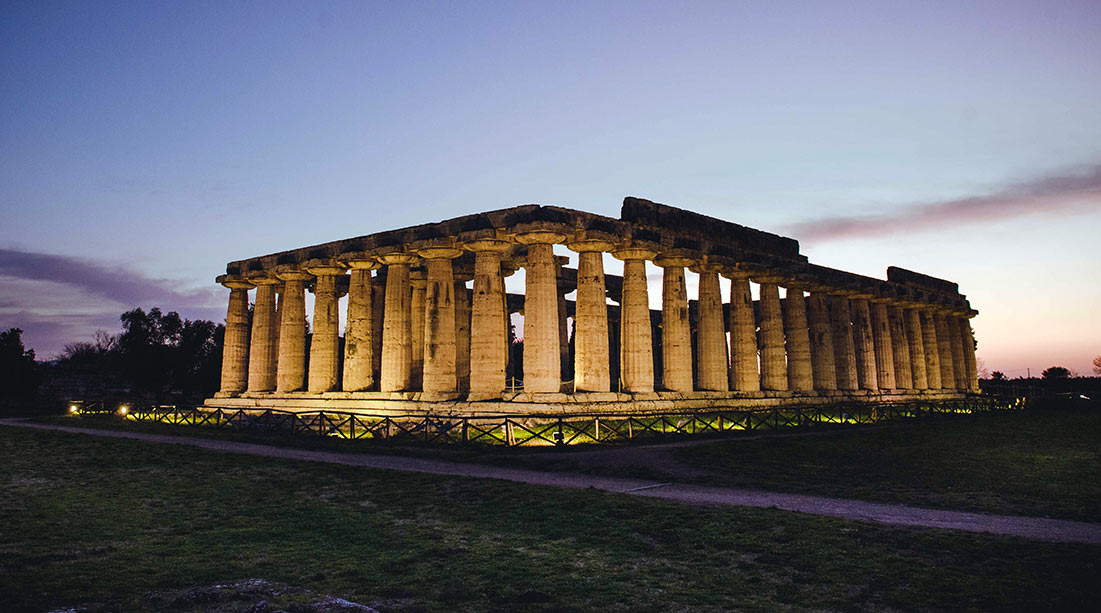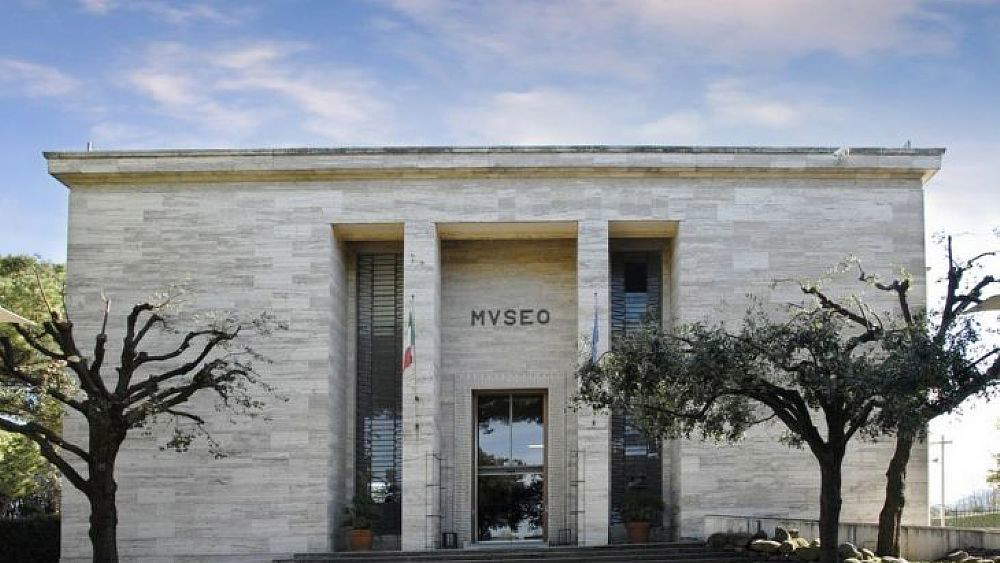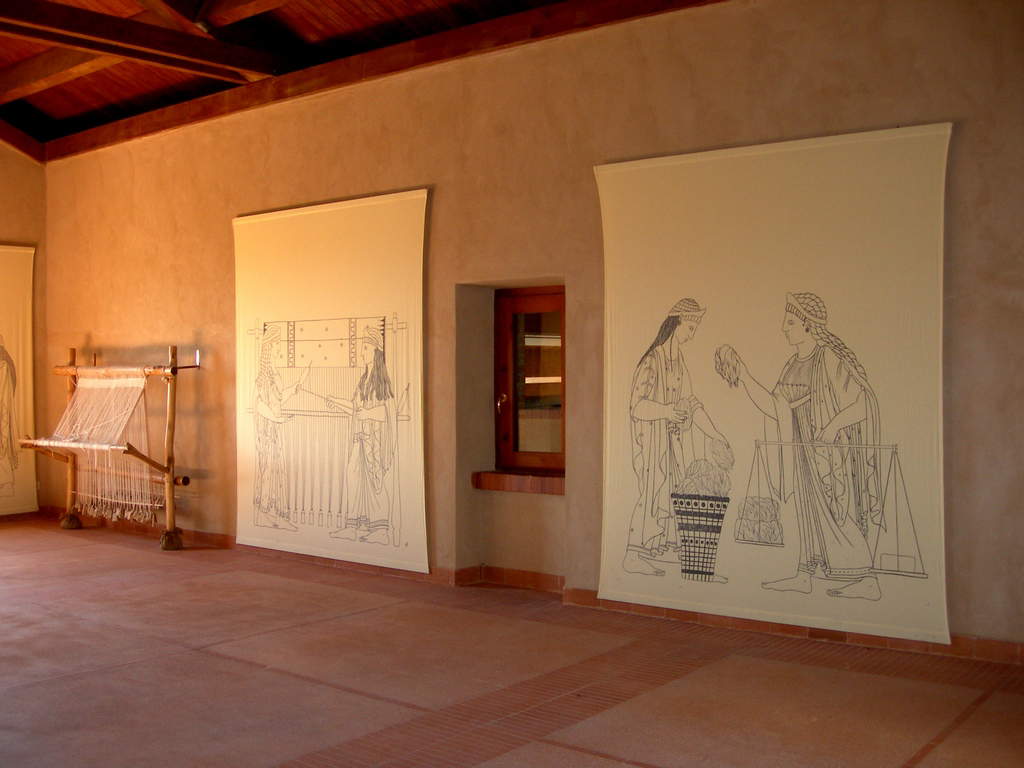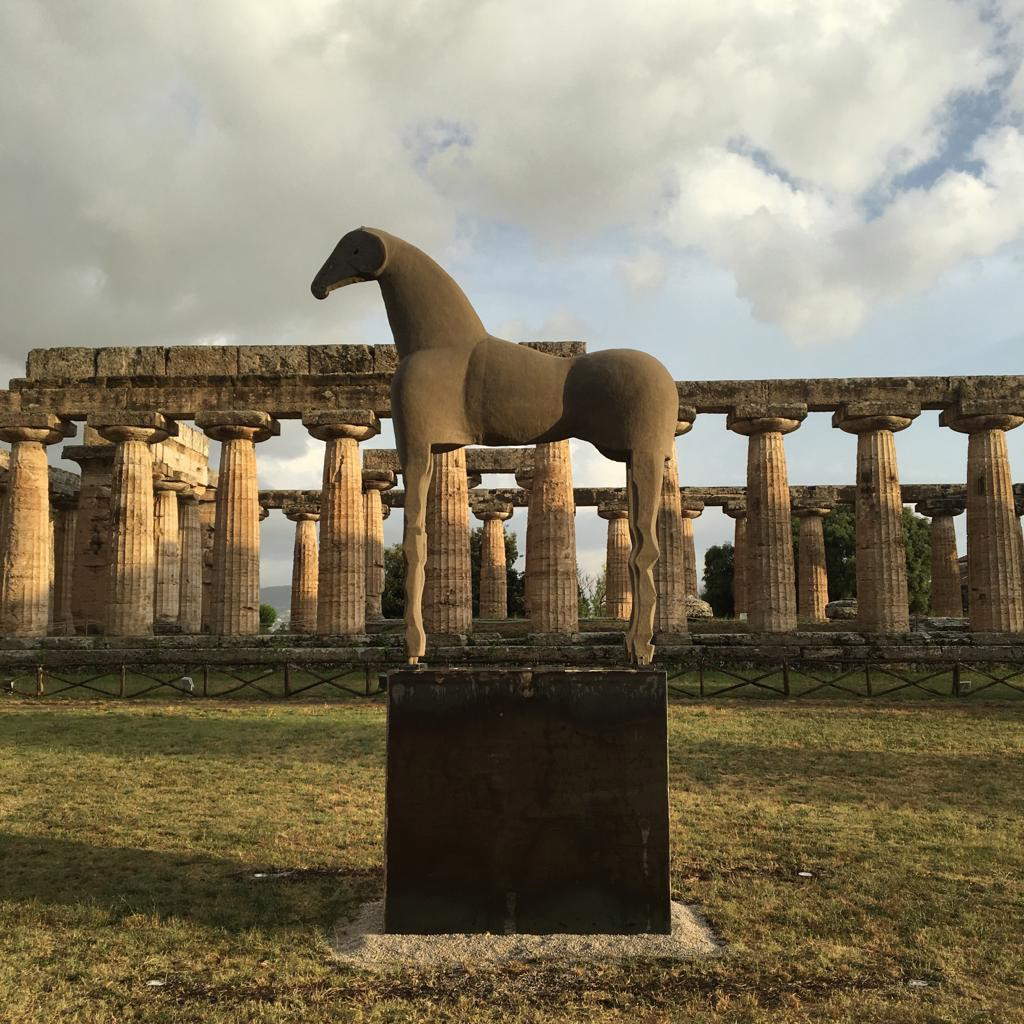Paestum is one of the symbols of the magical land of Cilento. With its millennia-old history Paestum offers visitors the possibility of a journey back in time to discover the remains of the ancient Greek city in which stand out its imposing temples built between the 6th and 5th centuries BC and considered, along with those of Athens and Agrigento, among the best preserved in the world. Surrounded by landscapes that are unique in the world, the city of Paestum attracts numerous visitors every year who are literally speechless at the magnificence of the ruins, but who also take advantage of the opportunity to stroll along what was its center, discover the Greek agora, the Roman forum, the basilica and then still go to admire the many artifacts found during excavations inside the archaeological museum. Here are the must-see stops on your trip to Paestum.
Today you can visit thearchaeological area that encloses what was the ancient center of the city. This is where all the most important monuments were located, not only the famous temples, but also the agora, the city’s founding tomb, and again streets, baths, fountains, and ancient meeting places for both Greeks and Romans. The Roman amphitheater also stood here, but incredibly, it is cut cleanly in half by Highway 18, which was designed in the late 19th century to pass by the ruins in order to provide the experience of seeing the ruins up close, but without thinking about what was still hidden. Moreover, it is estimated that the city of Paestum extended far beyond the perimeter of the present archaeological area and that there is still much to be unearthed

The Temple of Hera, better known as the basilica, is the oldest of the three large buildings in the archaeological area of Paestum. It was built around 560 B.C. and is the only temple from this period to have come down to us in this state of preservation. According to scholars, its layout would still resemble that of earlier wooden buildings, with the inner hall being divided by central columns, and without pediments. Its function for a long time was unclear to archaeologists, although there is now evidence that it was a building of worship, thought to be dedicated to Hera, protector of the Achaeans and bride of Zeus.

Imposing and austere, the Temple of Neptune is the largest and best preserved of the temples in the archaeological area of Paestum. All canons of Greek temple architecture are found in this magnificent building. It is traced back to the mid-5th century B.C., just when a temple dedicated to Zeus was being erected in Olympia, which, however, has not come down to the present day so well preserved. Neptune’s temple was built using large boulders connected by simple dowels and without mortar so much so that during the Middle Ages and even in modern times they were reused by locals for other constructions. As for its attribution to Neptune, archaeologists are still debating about it, and perhaps the temple, which was frequented until imperial times, was dedicated to the city’s main deity, Hera.

Built on a rise just outside the city center, the temple of Athena dominated and still dominates the entire archaeological area of Paestum. Athena’s is the only temple whose attribution is certain, and its origins are very ancient. From the earliest days of Paestum settlers built an early, small building dedicated to the goddess of crafts and war, while it was not until around 500 B.C. that the great temple that has come down to us perfectly preserved was erected. This was particularly important in city life and had an interior part higher than the surrounding colonnade that could be accessed through a richly decorated antechamber.

The first project to build the Archaeological Museum dates back to the 1930s when they wanted to find a home for the figurative panels, the metopes, found in the sanctuary of Hera at the mouth of the Sele River. However, construction of the museum was not completed until 1952, and since then it has become one of the centers of Paestum’s cultural life. The metopes can still be admired in their elevated location so that visitors see them from the same perspective as the ancients, but they are certainly not the only treasure preserved within these walls. Precious artifacts are housed here, including other materials found during new excavations at the Sele Heraion, but also the very famous Tomb of the Diver discovered in 1968.

According to legend, the sanctuary of Hera at the mouth of the Sele draws its origins from the voyage of Jason and his Argonauts to conquer the Golden Fleece. Returning from the distant Colchis on the Black Sea, the crew traveled along rivers such as the Danube, the Po, and the Rhone and then descended along the Tyrrhenian coast of Italy until they stopped at the mouth of the Sele River to dedicate a shrine to the goddess Hera who protected their journey. Although the existence of the sanctuary was known, it was not discovered until the 1930s when metopes were unearthed that are preserved in the Paestum Archaeological Museum along with many other artifacts. Instead, along the Sele River today there is a so-called storytelling museum, a restored old farmhouse where panels, videos, installations and 3-D reconstructions tell the story of the discovery and the events of the temple.

Between the temple of Hera and the temple of Neptune stands out since 2019 this sculpture about 4 meters high made by Mimmo Paladino. It is a contemporary intrusion within the sacredness of the ancient city that was created through an agreement between the Paestum Archaeological Park and the Museum of Minimal Materials in Contemporary Art. This horse is made from sand that comes from the beaches of Paestum and depicts Pegasus, the winged horse given birth by Medusa. The purpose of this amazing sculpture is to offer insights not only into ancient architecture, but also into mythology and how it can all still be interpreted today.

Here the school of philosophy of Parmenides and Zeno was born, and here even today one can touch the everyday life of those times now lost in the mists of time. The foundation of Velia is traced back to around 540 B.C. by the inhabitants of Phocaea, a city in present-day Turkey fleeing across the Mediterranean from the Persians. The city of Velia, as it was later renamed by the Romans, is absolutely striking with its acropolis surrounded by a large circle of walls within which were the ancient quarters and where today stands the magnificent Red Gate, the oldest example of a round arch in Italy

 |
| Paestum, what to see: the 8 must-see stops |
Warning: the translation into English of the original Italian article was created using automatic tools. We undertake to review all articles, but we do not guarantee the total absence of inaccuracies in the translation due to the program. You can find the original by clicking on the ITA button. If you find any mistake,please contact us.